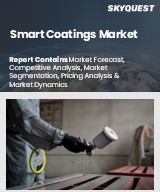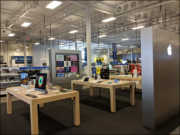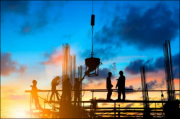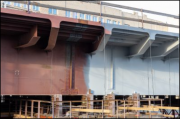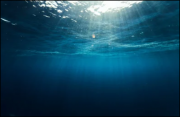
|
시장보고서
상품코드
1573890
스마트 코팅 시장, 기회, 성장 촉진요인, 산업 동향 분석 및 예측(2024-2032년)Smart Coatings Market, Opportunity, Growth Drivers, Industry Trend Analysis and Forecast, 2024-2032 |
||||||
스마트 코팅 세계 시장은 2023년 36억 달러로 평가되며, 2024년부터 2032년까지 연평균 14.4% 이상 성장할 것으로 예상됩니다.
이 시장은 급속한 기술 발전과 다양한 분야에서의 수요 급증에 힘입어 급격한 변화를 겪고 있습니다.
시장을 형성하는 주요 트렌드 중 하나는 자가 복구 코팅의 출현입니다. 이러한 코팅은 자율적으로 손상을 복구할 수 있기 때문에 재료의 수명을 연장하고 내구성을 향상시키며 유지보수 비용을 절감할 수 있습니다. 이러한 기술은 자동차, 항공우주 등 장기적인 성능이 가장 중요한 분야에서 큰 가치를 지닙니다. 또한, 의료 및 식품 가공 분야에서 위생에 대한 관심이 높아지면서 항균 및 항곰팡이 코팅에 대한 관심이 증가하고 있습니다. 이러한 코팅은 유해한 미생물을 억제하고 보다 안전한 환경을 보장하는 데 매우 중요한 역할을 합니다.
스마트 코팅 산업도 빠르게 진화하고 있으며, 업계 상황을 재구성하는 추세에 영향을 받고 있습니다. 시장을 주도하는 중요한 트렌드는 첨단 자기복원 코팅의 출현입니다. 이러한 첨단 소재는 자율적으로 손상을 복구하고 내구성을 높이고 유지보수를 최소화하는 기능을 가지고 있습니다. 이 기능은 안전과 성능을 위해 재료의 무결성이 필수적인 자동차 및 항공우주와 같이 마모가 심한 분야에서 특히 중요합니다.
제품 유형별로는 부식 방지, 자가 수리, 방오, 항균, 항균, 셀프 클리닝, 동결 방지 코팅 등이 있습니다. 시장을 선도하는 부식 방지 코팅 분야는 2023년 8억 1,060만 달러의 시장 규모를 자랑하며 2032년에는 약 27억 달러로 급성장할 것으로 예상됩니다. 스마트 코팅 산업은 그 범위와 가능성을 재정의하는 몇 가지 영향력 있는 트렌드에 의해 형성되고 빠르게 진화하고 있습니다. 시장을 주도하는 주요 트렌드 중 하나는 첨단 자가복구 코팅의 개척입니다. 이러한 혁신적인 소재는 손상된 경우 자체 복구가 가능하여 내구성이 향상되고 유지보수 필요성이 감소합니다.
기술적으로 시장은 나노코팅, 자극 반응성 코팅, 마이크로 캡슐화 및 기타로 나뉩니다. 나노코팅 분야는 2023년 12억 달러의 시장 규모를 기록했으며, 2032년에는 42억 달러에 달할 것으로 예상됩니다. 나노코팅 부문의 급격한 성장은 산업계의 다양한 성능 요구를 충족시키는 독특한 특성에 기인합니다. 나노미터 단위의 초박막으로 적용되는 나노코팅은 기존 코팅을 능가하는 내구성 강화, 우수한 보호 및 향상된 기능성으로 인해 기존 코팅을 능가합니다.
북미는 2023년 11억 달러의 매출을 기록하며 세계 스마트 코팅 시장의 선두주자로 부상했습니다. 예측에 따르면 이 수치는 2032년까지 약 38억 달러로 증가할 것으로 예상됩니다. 이 지역의 시장 성장은 기술 발전, 엄격한 규제, 각 분야의 수요 급증에 의해 뒷받침되고 있습니다. 이러한 성장의 중심에는 북미의 기술 혁신과 기술 발전에 대한 확고한 의지가 있습니다.
목차
제1장 조사 방법과 조사 범위
제2장 주요 요약
제3장 업계 인사이트
- 생태계 분석
- 주요 제조업체
- 유통업체
- 업계 전체의 이익률
- 업계에 대한 영향요인
- 성장 촉진요인
- 다양한 산업의 내구성 소재에 대한 요구 상승
- 지속가능성과 환경 규제에 대한 관심 상승
- 소비자 의식과 채용 증가
- 시장 과제
- 고비용
- 원료 입수가 어려움
- 시장 기회
- 새로운 기회
- 성장 가능성 분석
- 성장 촉진요인
- 원자재 상황
- 제조 동향
- 기술의 진화
- 지속가능한 제조
- 그린 프랙티스
- 탈탄소화
- 원자재의 지속가능성
- 가격 동향(달러/톤), 2021-2023년
- 규제와 시장에 대한 영향
- Porters 분석
- PESTEL 분석
제4장 경쟁 상황
- 소개
- 기업 매트릭스 분석
- 기업 점유율 분석
- 지역별 기업 점유율 분석
- 북미
- 유럽
- 아시아태평양
- 라틴아메리카
- 중동 및 아프리카
- 지역별 기업 점유율 분석
- 경쟁 포지셔닝 매트릭스
- 전략 대시보드
제5장 시장 추정과 예측 : 제품 유형별, 2021-2032년
- 주요 동향
- 방청 코팅
- 자가 치유 코팅
- 방오
- 항균
- 셀프 클리닝 코팅
- 동결 방지 코팅
- 기타
제6장 시장 추정과 예측 : 기술별, 2021-2032년
- 주요 동향
- 나노코팅
- 자극 응답성 코팅
- 마이크로캡슐화
- 기타
제7장 시장 추정과 예측 : 최종 이용 산업별, 2021-2032년
- 주요 동향
- 자동차
- 항공우주
- 건설
- 해양
- 일렉트로닉스
- 군·방위
- 기타
제8장 시장 추정과 예측 : 지역별, 2021-2032년
- 주요 동향
- 북미
- 미국
- 캐나다
- 유럽
- 독일
- 영국
- 프랑스
- 이탈리아
- 스페인
- 아시아태평양
- 중국
- 인도
- 일본
- 호주
- 한국
- 라틴아메리카
- 브라질
- 멕시코
- 아르헨티나
- 중동 및 아프리카
- 남아프리카공화국
- 사우디아라비아
- 아랍에미리트
제9장 기업 개요
- AkzoNobel
- BASF
- Clariant
- Diamond Coatings
- DOW
- Hempel
- Jotun
- NanoTech Coatings
- Saint-Gobain
- Sherwin-Williams
The Global Smart Coatings Market was valued at USD 3.6 billion in 2023 and is projected to grow at a CAGR of over 14.4% from 2024 to 2032. This market is witnessing a significant transformation, driven by swift technological advancements and a surging demand across diverse sectors.
Key trends shaping the landscape include the emergence of self-healing coatings. These coatings can autonomously mend damage, thereby prolonging material lifespan, enhancing durability, and curtailing maintenance costs. Such technology holds immense value in sectors like automotive and aerospace, where long-term performance is paramount. Furthermore, there is an escalating interest in anti-microbial and anti-fungal coatings, spurred by heightened hygiene concerns in healthcare and food processing. These coatings play a pivotal role in curbing harmful microorganisms, ensuring safer environments.
The smart coatings industry is also rapidly evolving, influenced by trends that are reshaping its landscape. A significant trend propelling the market is the advent of advanced self-healing coatings. These cutting-edge materials possess the capability to autonomously mend damage, bolstering their durability and minimizing maintenance. This feature is especially crucial in high-wear sectors like automotive and aerospace, where material integrity is vital for safety and performance.
The overall industry is classified into product type, technology, end-use industry, and region.
Based on product type, the market encompasses anticorrosion, self-healing, anti-fouling, anti-microbial, self-cleaning, anti-icing coatings, and more. Leading the pack, the anticorrosion coatings segment boasted a market value of USD 810.6 million in 2023, with projections to soar to approximately USD 2.7 billion by 2032. The smart coatings industry is rapidly evolving, shaped by several influential trends that are redefining its scope and potential. One of the key trends driving the market is the development of advanced self-healing coatings. These innovative materials can repair themselves when damaged, which enhances their durability and reduces maintenance needs.
In terms of technology, the market is divided into nano-coatings, stimuli-responsive coatings, microencapsulation, and others. Dominating the scene, the nano-coatings segment recorded a market value of USD 1.2 billion in 2023, with expectations to climb to around USD 4.2 billion by 2032. The surge in the nano-coatings segment can be attributed to their unique properties, which cater to diverse performance needs across industries. Applied as ultra-thin layers at the nanometer scale, nano-coatings outshine traditional coatings with their enhanced durability, superior protection, and augmented functionality.
North America emerged as the front runner in the global smart coatings market, raking in a revenue of USD 1.1 billion in 2023. Projections indicate this figure could swell to approximately USD 3.8 billion by 2032. The region's market growth is buoyed by technological strides, stringent regulations, and a burgeoning demand across sectors. Central to this expansion is North America's unwavering commitment to innovation and technological progress.
Table of Contents
Chapter 1 Methodology and Scope
- 1.1 Market scope and definitions
- 1.2 Base estimates and calculations
- 1.3 Data collection
- 1.4 Forecast parameters
- 1.5 Data validation
- 1.6 Data sources
- 1.6.1 Primary
- 1.6.2 Secondary
- 1.6.2.1 Paid sources
- 1.6.2.2 Public sources
Chapter 2 Executive Summary
- 2.1 Industry 360° synopsis
Chapter 3 Industry Insights
- 3.1 Industry ecosystem analysis
- 3.1.1 Key manufacturers
- 3.1.2 Distributors
- 3.1.3 Profit margins across the industry
- 3.2 Industry impact forces
- 3.2.1 Growth drivers
- 3.2.1.1 The growing need for durable materials in various industries
- 3.2.1.2 Growing focus on sustainability and environmental regulations
- 3.2.1.3 Increasing consumer awareness and adoption
- 3.2.2 Market challenges
- 3.2.2.1 High cost
- 3.2.2.2 Limited availability of raw materials
- 3.2.3 Market opportunity
- 3.2.3.1 New opportunities
- 3.2.3.2 Growth potential analysis
- 3.2.1 Growth drivers
- 3.3 Raw material landscape
- 3.3.1 Manufacturing trends
- 3.3.2 Technology evolution
- 3.4 Sustainable manufacturing
- 3.4.1.1 Green practices
- 3.4.1.2 Decarbonization
- 3.4.2 Sustainability in raw materials
- 3.5 Pricing trends (USD/Ton), 2021 to 2023
- 3.5.1 North America
- 3.5.2 Europe
- 3.5.3 Asia Pacific
- 3.5.4 Latin America
- 3.5.5 Middle East and Africa
- 3.6 Regulations and market impact
- 3.7 Porter's analysis
- 3.8 PESTEL analysis
Chapter 4 Competitive Landscape, 2023
- 4.1 Introduction
- 4.2 Company matrix analysis
- 4.3 Company market share analysis
- 4.3.1 Company Market share analysis by region
- 4.3.1.1 North America
- 4.3.1.2 Europe
- 4.3.1.3 Asia Pacific
- 4.3.1.4 Latin America
- 4.3.1.5 Middle East Africa
- 4.3.1 Company Market share analysis by region
- 4.4 Competitive positioning matrix
- 4.5 Strategic dashboard
Chapter 5 Market Estimates and Forecast, By Product Type, 2021 - 2032 (Kilo Tons) (USD Million)
- 5.1 Key trends
- 5.2 Anticorrosion coatings
- 5.3 Self-Healing coatings
- 5.4 Anti-Fouling
- 5.5 Anti-Microbial
- 5.6 Self-Cleaning coatings
- 5.7 Anti-icing coatings
- 5.8 Others
Chapter 6 Market Estimates and Forecast, By Technology, 2021 - 2032 (Kilo Tons) (USD Million)
- 6.1 Key trends
- 6.2 Nano-Coatings
- 6.3 Stimuli-Responsive coatings
- 6.4 Microencapsulation
- 6.5 Others
Chapter 7 Market Estimates and Forecast, By End-use Industry, 2021 - 2032 (Kilo Tons) (USD Million)
- 7.1 Key trends
- 7.2 Automotive
- 7.3 Aerospace
- 7.4 Construction
- 7.5 Marine
- 7.6 Electronics
- 7.7 Military And Defense
- 7.8 Others
Chapter 8 Market Estimates and Forecast, By Region, 2021 - 2032 (Kilo Tons) (USD Million)
- 8.1 Key trends
- 8.2 North America
- 8.2.1 U.S.
- 8.2.2 Canada
- 8.3 Europe
- 8.3.1 Germany
- 8.3.2 UK
- 8.3.3 France
- 8.3.4 Italy
- 8.3.5 Spain
- 8.4 Asia Pacific
- 8.4.1 China
- 8.4.2 India
- 8.4.3 Japan
- 8.4.4 Australia
- 8.4.5 South Korea
- 8.5 Latin America
- 8.5.1 Brazil
- 8.5.2 Mexico
- 8.5.3 Argentina
- 8.6 Middle East and Africa
- 8.6.1 South Africa
- 8.6.2 Saudi Arabia
- 8.6.3 UAE
Chapter 9 Company Profiles
- 9.1 AkzoNobel
- 9.2 BASF
- 9.3 Clariant
- 9.4 Diamond Coatings
- 9.5 DOW
- 9.6 Hempel
- 9.7 Jotun
- 9.8 NanoTech Coatings
- 9.9 Saint-Gobain
- 9.10 Sherwin-Williams






